I know we’re just fresh off the wheels of the Godzilla marathon, but it is time to dive into yet another marathon, a project I’ve been meaning to start for some time. Ys has always been a big name in the role-playing game landscape and its long been overdue for me to cover this series. Many of the role-playing games of today can trace their roots back to Ys. While the series is still going strong, many likely view the original game as a bygone relic unworthy of their time and attention. As something that was initially released in 1987 and ‘88 it is a fair question to ask, “What are Ys 1 & 2 worth today?” Let us wait no longer to dive into the classic, the beloved Ys 1 & 2.

Pre-Production & Background
As we dive into the pre-release of Ys, we need to go all the way back to the beginning. The year is 1987, both Falcom and the role-playing game genre were very much in their infancy. Ys may not have been the first role-playing game series made, but it was one of the front runners of the action RPG genre. At this point in time there were very few viable forms of this content. One of the biggest names on the market at the time of Ys’ release was Zelda and at one point in time the term ARPG was less common than the term Zelda clone. Ys was not only a name to challenge Zelda, but a very unique take on a genre that was still in its infancy. Now Zelda and Ys are barely in the same genre and are so far apart from one another that to call Ys a Zelda clone is an insult to both series.
Part of what appealed to people so much about Ys is what it did differently from the competition. For a game produced in the late ‘80s to still remain a unique experience over 35 years later is an achievement in itself. The development of Ys 1 & 2 was directed by Masaya Hashimoto who would later go on to found Quintet. He was also responsible for the design and programming of the original duology. The game was produced and written by Masayuki Kato and Tomoyoshi Miyazaki respectively whilst the score was originally composed by Yuzo Koshiro and Meiko Ishikawa.
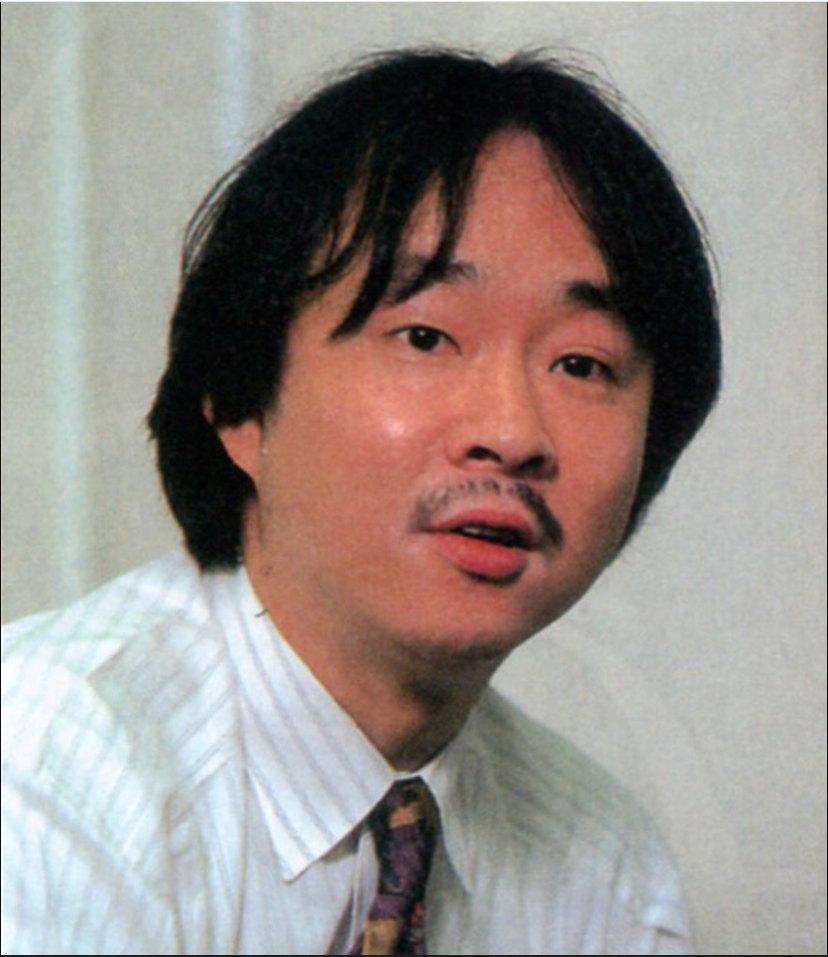
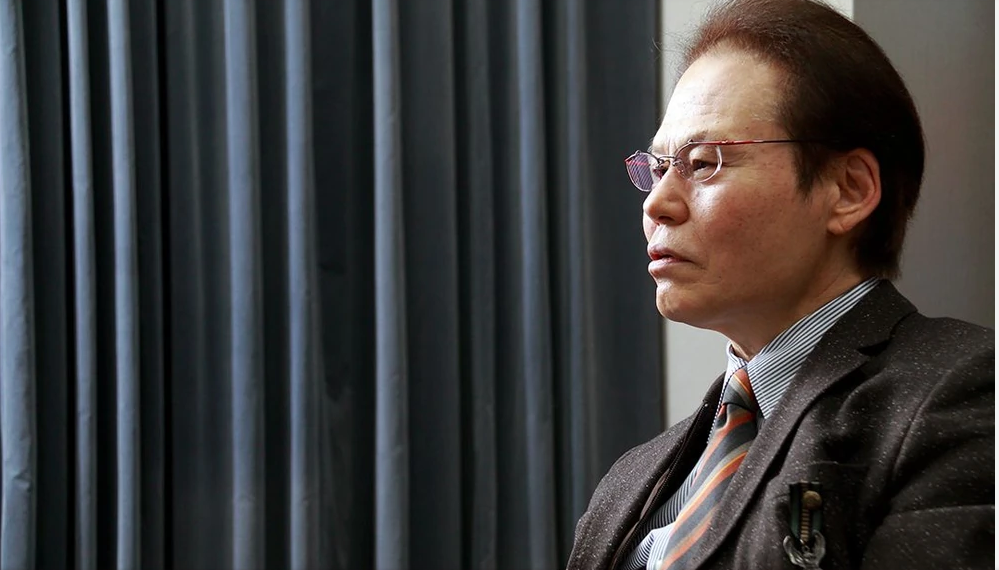

Ys 1 & 2’s development was also a landmark for the fact that the game Falcom had made was so big that it had to be split into two separate games. The original version of Ys 1 & 2 was released in 1987 and ‘88 respectively for the PC-88 and has since been released for over a dozen platforms. The duology has more ports than the likes of Elder Scrolls Skyrim as well as the original Resident Evil 4. Many modern releases see the duology being released together since they are two pieces of a single whole. So, playing one without the other is an incomplete experience.
Writing & Synopsis
Our story begins when a 16-year-old adventurer named Adol Christin is drawn to the land of Esteria upon hearing that this is where the roots of an ancient civilization could be found. Sadly, the land has been cut off from the outside world because the people of Esteria are under siege by a demonic horde causing chaos across the land. In this time of crisis, Adol is the only one who can restore peace. His mission is by all appearances simple; find and reclaim the six books of Ys, which will reveal the truth behind the chaos unfolding in this land. Little did he know that this journey would change not only his life, but also the fate of the world forever more.
Like many video games past and future there is a manual of sorts that details the basic mechanics along with some background on the story. However, Ys has much more than that. Other games might give you one page of information on the story itself. Ys in actuality has an introductory novel that details several key aspects of the plot. This pre-story explains that Adol would go on to be a legendary adventurer, how he got to Esteria in the first place, and it also mentions a story called the Legend of the Five Dragons that takes place in a land called Altago. However, that specific piece of information isn’t crucial at this point but will be of utmost importance when we get to the events of Ys Seven.
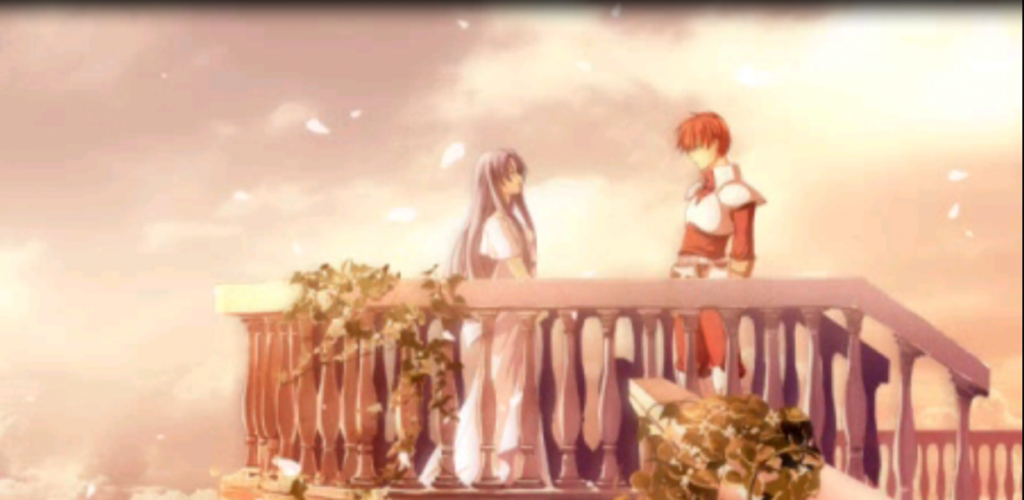
The story seems abundantly simple looking back on it by today’s standards but in 1987 a story of a role-playing game having this much detail and nuance was practically unheard of. Adol as a character is largely silent until a key moment, and this may lead you to believe he has little to no character. But Adol past and present has always been extremely well characterized through his actions and how he interacts with the world. You see his general inexperience at that point in life, but his free-spirited candor attracts a wide array of people to his side because Adol can get along with just about anyone.
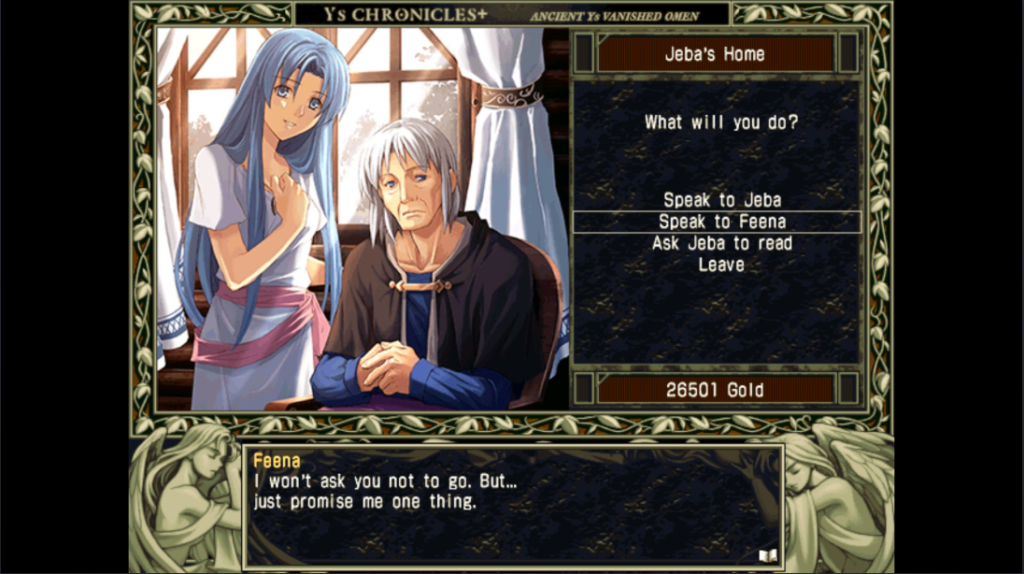
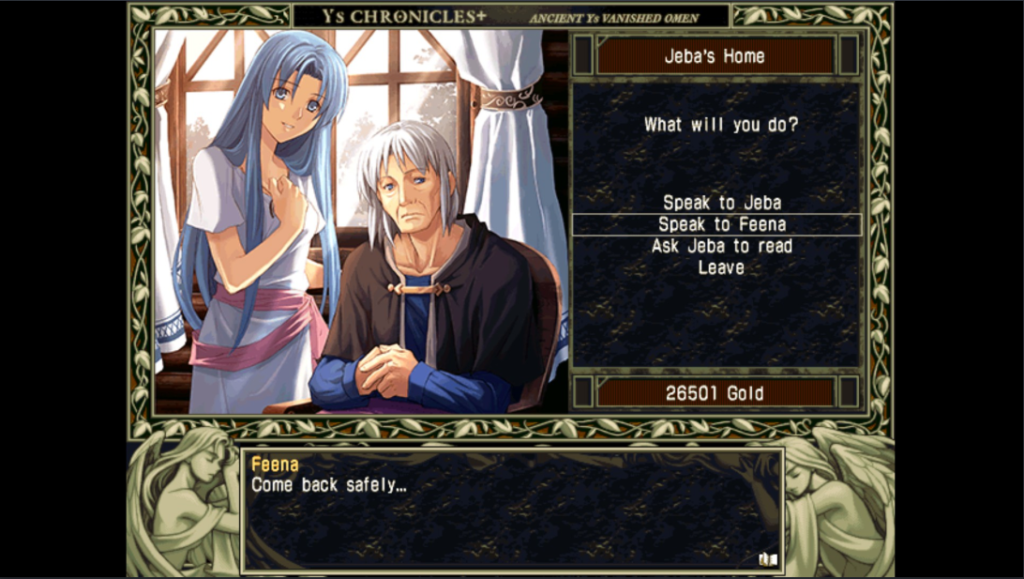
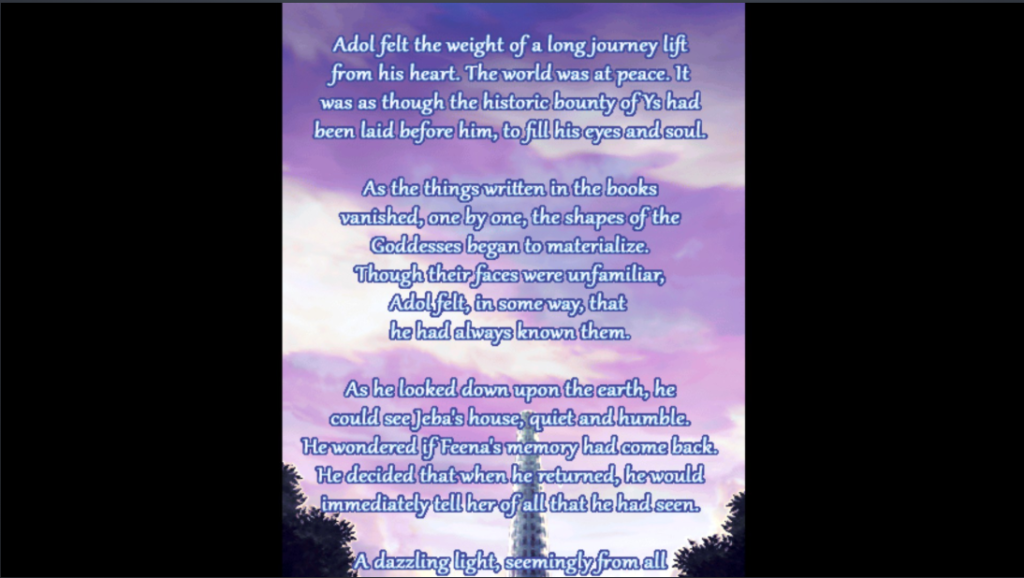
In early localized scripts of the original duology some of the outside companies working on various Ys’ ports would take a lot of liberties with the translation as well as Adol’s character, going so far as to give him dialogue. But this choice, while seemingly harmless, goes against Falcom’s intent and undercuts the most emotional moment of this duology. Modern translations such as Xseed Games’ localization of Chronicles remain the most faithful to Falcom’s intent and delivers a script that still may not be a 1-to-1 translation but does convey the most important aspects of the story.

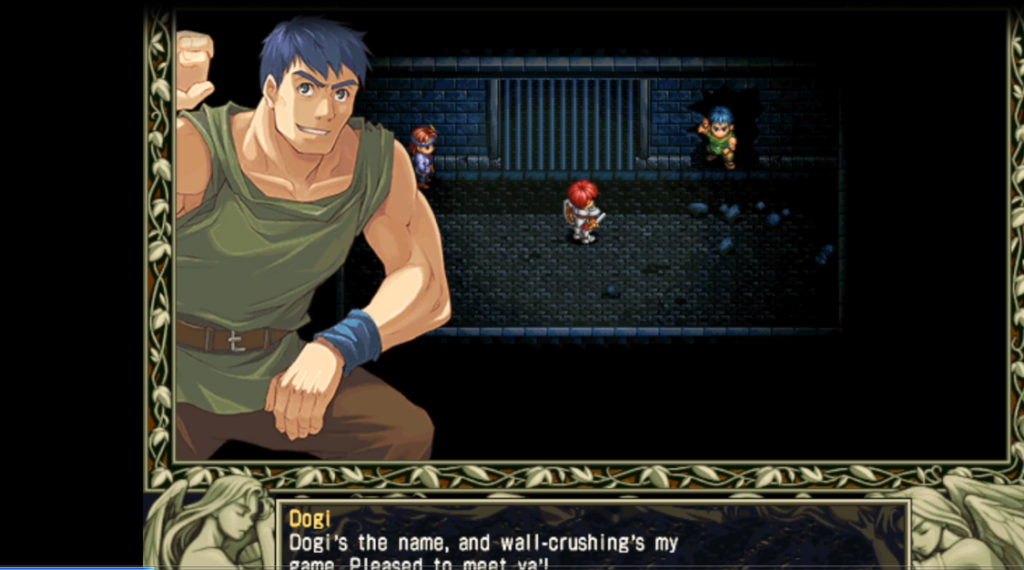
Given that this was written in the ‘80s there is plenty left up to player interpretation, at least until later games cleared up and expanded on certain concepts. But the original duology is very understated and nuanced in how it delivers the story. Throughout the events of Ys 1 the importance of silver is very much implied with the townspeople reflecting on how it brought Esteria prosperity, as well as how it has seemingly been stolen by the demonic horde. It is also the only weakness of Dark Fact, lord sovereign of Darm Tower, who commands the demons of Esteria. However, this is never directly told to you. But players who have paid attention to the dialogue and environmental storytelling will easily discover this.
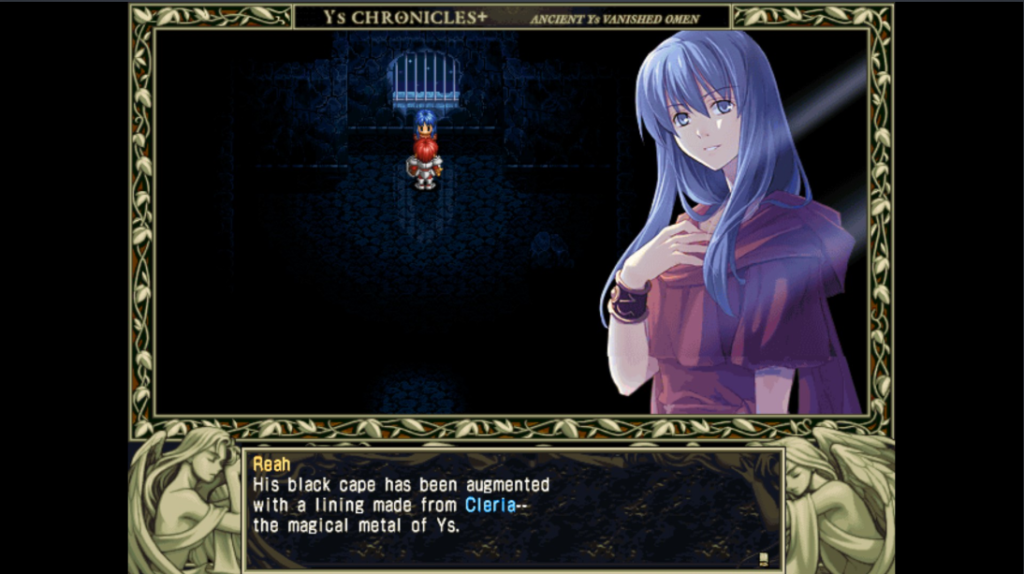
Ys 1 & 2 poses many themes across its runtime, but at its core it conveys themes of eras ending, laying the past to rest, as well as saying goodbye to those most dear. Despite this being the first entry in the series this game manages to deliver the most emotionally significant moment in Adol’s life; the start of his career as an adventurer and it’s also where he had an encounter that would change his life forever. Over the course of his adventures Adol has and will continue to meet many people, but the days he shared with Feena in Esteria will be etched onto his heart forever.
Gameplay
Now as an action RPG series Ys has adapted quite a bit to the changing times, but the original duology remains a unique take on an ARPG formula. For those who have no idea what I’m talking about, ARPGs happen in real time in which you defeat enemies to gain experience to grow in level and strength. The game focuses on a top down perspective. Many RPGs past and present have players press a button or multiple buttons in order to carry out attacks.
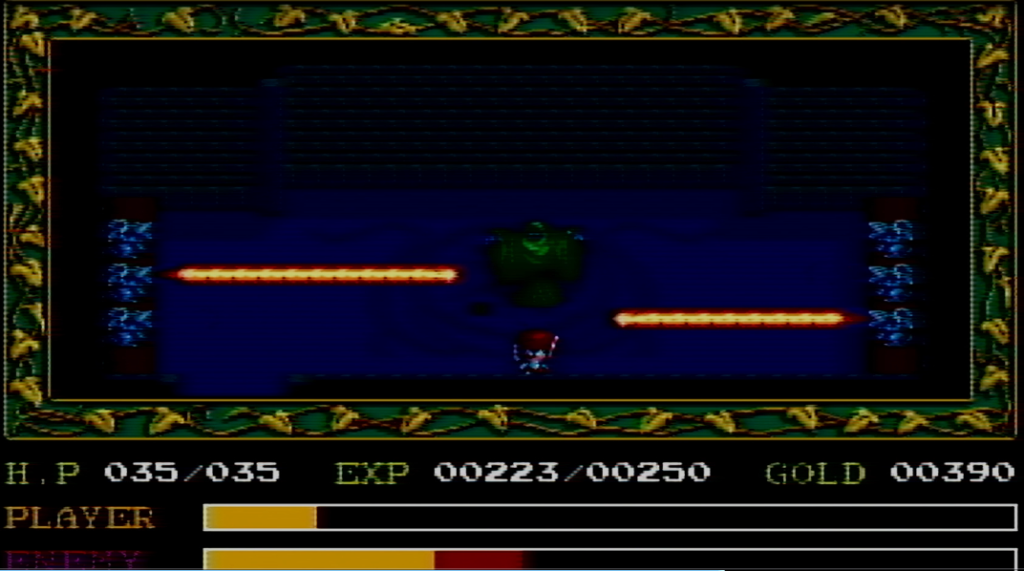
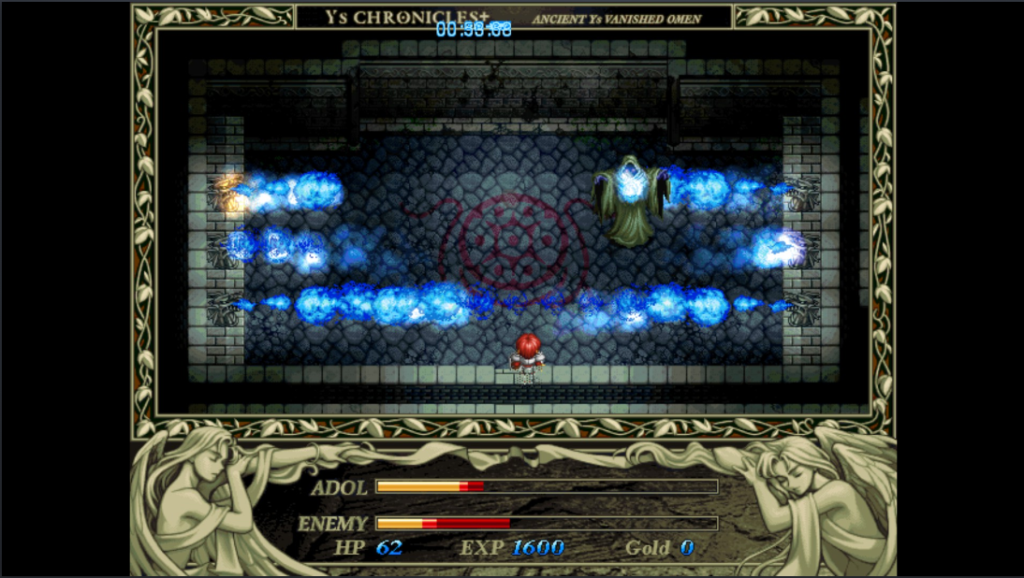
Ys however delivered an innovation in the form of you don’t press any buttons to attack as far as Ys 1 is concerned. Making contact with the enemy will automatically have Adol deliver an attack. This may lead you to believe that the game is as simple as running everyone over with little effort. The Bump combat is a lot more involved than that, making head on contact with the enemy will more often than not cause you to take damage instead. Effectiveness in combat requires you to hit the enemy off center, either from the side or behind.
Ys at the beginning of its lifespan was a game where positioning yourself properly was critical. Modern remakes of the duology have brought new things to the table like 8-directional movement, which dynamically changed how the game was played. In the original releases of the game your pace was much slower and locked you into four cardinal directions. There are no shortcuts in those early versions, so you need to plan out your routes, so you don’t get flanked. In fact, certain bosses like Nygtilger could move in eight directions while you couldn’t. This created tense dynamic gameplay that hasn’t been replicated in the series for some time now.
Given that Ys 1 & 2 are two parts of the same whole, it is natural that your adventures in Esteria during the events of Ys 1 are a mere pre-text and tutorial to the meat of the game, in this case Ys 2. Every boss, dungeon, and encounter is designed to prepare you for that second half where the game gets more complicated. The original duology is constantly changing up its surroundings as you never stay in one area for too long. The obvious exception is Ys 1’s endgame where you must scale the 25-floor Darm Tower, which contains up to four bosses including the final boss of Ys, Dark Fact. In the original versions of the game the tower gets visually old very fast. But the remakes serve to make the tower less stale through altered visuals as well as different musical tracks accompanying the various stratums.
Ys 2 brought various forms of magic that the player can use to spice up the gameplay, be it fire magic, which you’ll be using to take down bosses or Roo magic that you can use to turn into an adorable demon and gain the ability to talk to every single enemy demon in the game for additional dialogue and tips on where to go. Ys 1 & 2 makes early use of a now classic Falcom feature in exp- level scaling. Many RPGs have enemies that are worth a fixed amount of experience that doesn’t change regardless of your level when you kill them. Instead, enemies in Ys have fixed levels, but killing those enemies at lower levels will yield you more experience whilst killing them at higher levels will reward you less. This design philosophy serves to make your journey less about killing hordes just to get to that level and encourages you to spend more time learning the ins and outs of the sandbox as well as the boss’ patterns.
Furthermore, on the topic of bosses, they all deliver something different, they all have patterns and openings, very few if any bosses are susceptible to you just running up and hitting them. Vagullion has a certain reputation among players as That Boss but in the original versions of the game his pattern is very easy to manipulate. It wasn’t until the modern releases such as Ys Eternal and Chronicles that his pattern became much harder to anticipate, with the window for attacking him much shorter in modern releases.
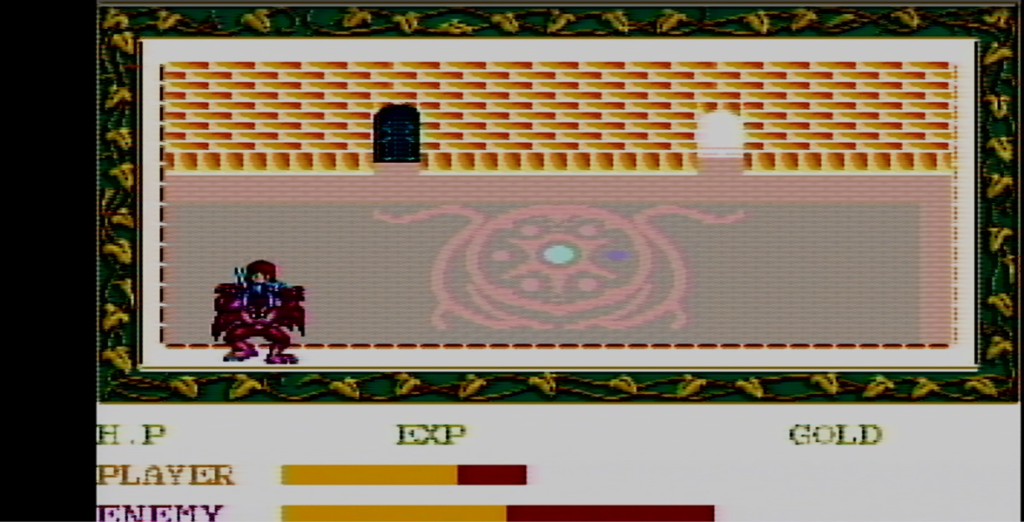
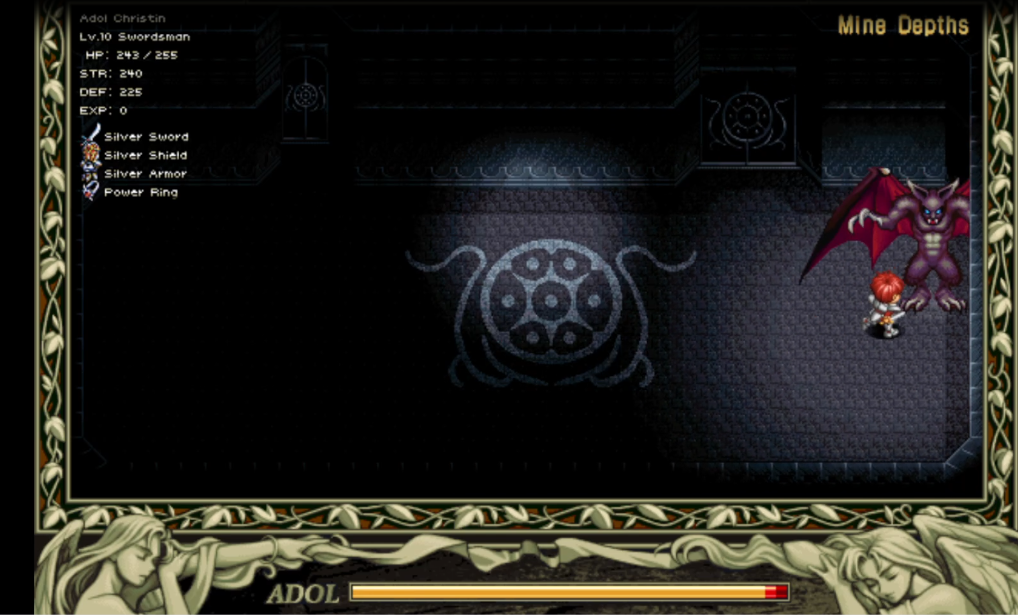
Ys 1 has a number of things that I feel hold it back, but it seems Falcom knew that since just about every feature that caused me to rage got fixed in Ys 2. For example, you can carry one healing item at a time in Ys 1, which you can use while in dungeons, but not during boss fights. Ys 2 fixed that by increasing the number of healing items you can carry, plus you can use them in a boss fight. Falcom wasn’t content to release the second half of the game with no updates, so they genuinely improved the experience to deliver something truly special.
One thing of note about Ys 1 & 2 regardless of what version you’re playing is that it’s difficulty is classical. If you die you’re going to your last save, it doesn’t matter if it was two minutes ago or two hours ago. Modern versions such as Chronicles bring in some quality-of-life features such as additional difficulties and time attack.
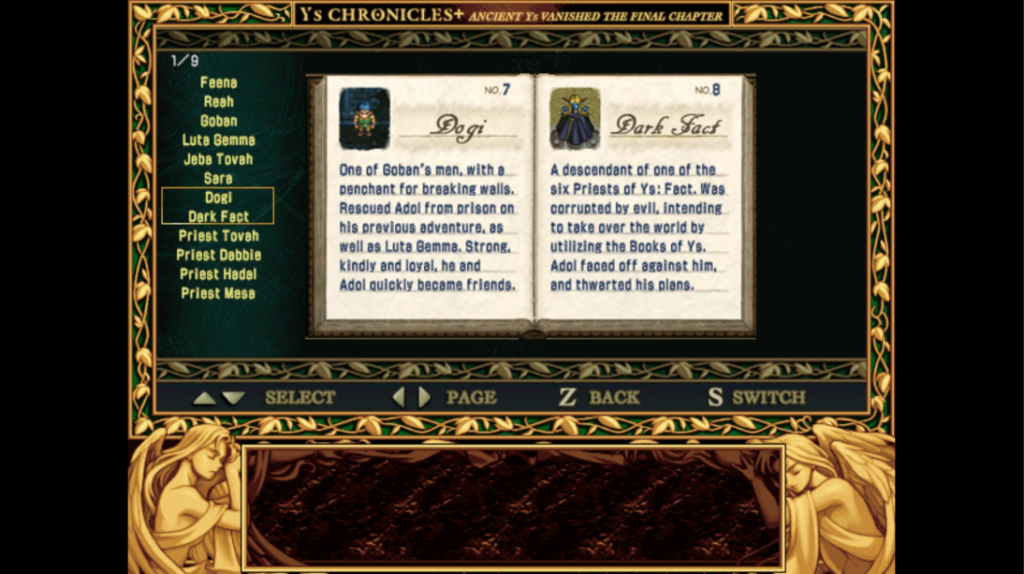
Presentation & Score
Given the wide array of consoles Ys 1 & 2 has been released for over the years there are so many different artistic styles and scores accompanying those versions it would be impossible to discuss them all. But when looking back at the series, every entry delivers something different with its musical identity. The original team behind the score was Yuzo Koshiro and Mieko Ishikawa, both of whom have since left Falcom.
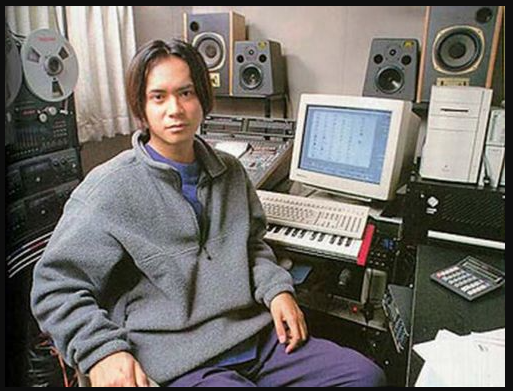
Koshiro was no stranger to Falcom at this point as he had composed for a number Falcom titles including Xanadu, Sorcerian and Dragon Slayer IV AKA Legacy of the Wizard. Koshiro joined Falcom when he was 18 years old and was a key part of what made Falcom’s sound very distinctive. Ys has always had a very distinct identity and Koshiro was a big part of establishing that. He would leave the company in 1988 shortly after the release of Ys 2 but his work cannot be understated for how influential it was for the series and the role-playing game genre as a whole.
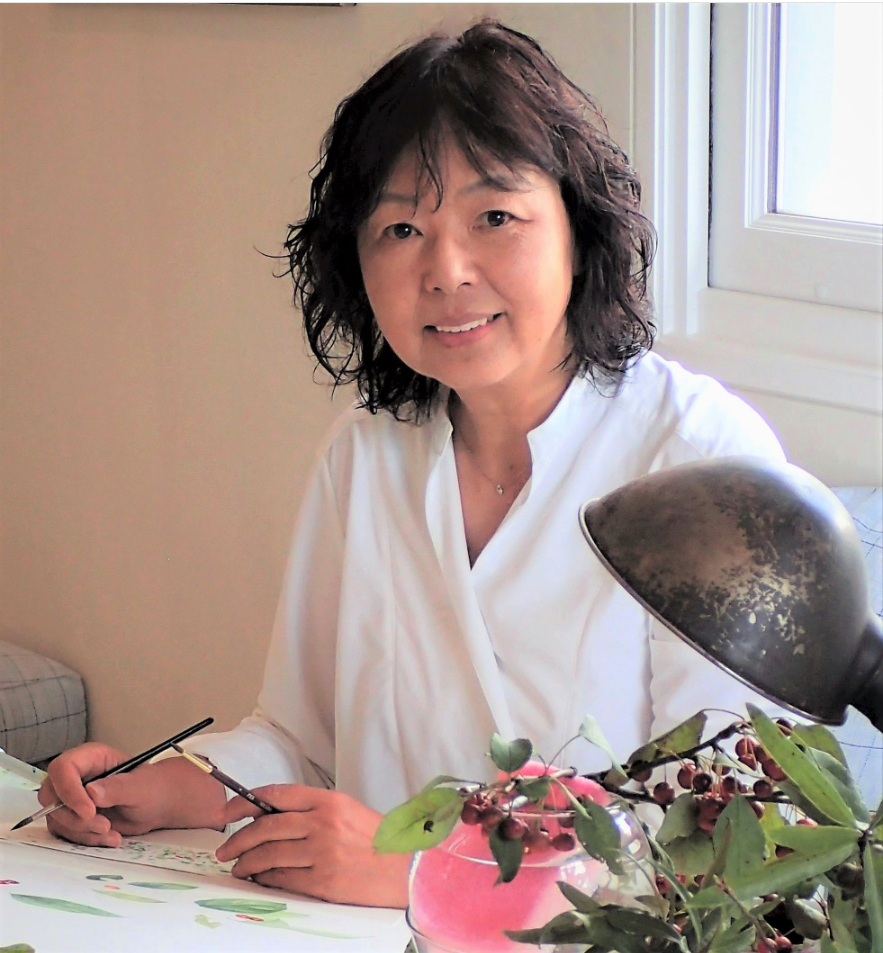
Like Koshiro, Ishikawa was a founding member of Falcom’s sound team. The team was formally founded in 1988 and would serve as the musical backbone of Falcom’s development efforts going forward. Ishikawa was the composer on a number of titles such as Sorcerian, Dragon Slayer IV Drasle Family, and Ys of course. She officially stopped composing in 1997 with Sorcerian Forever but has returned on a number of scores such as 2006’s PlayStation Portable port of Gurumin. She still remains a member of the company but is now a managing director of Falcom’s design unit and serves as a coordinator on many modern Falcom titles.
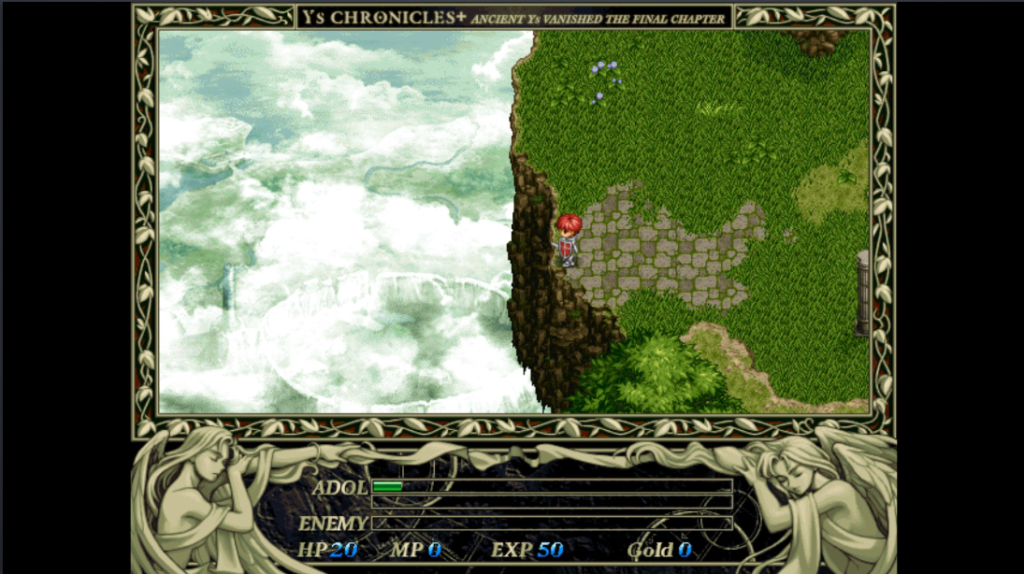
Now when it comes to artistic styles there are so many options to analyze. They vary a great deal in appearance and that makes sense given that it seems like Ys 1 & 2 changed the art direction every decade with each remake. But I must say I am quite drawn to the artistic style present in the Ys Complete and Chronicles versions of the game.
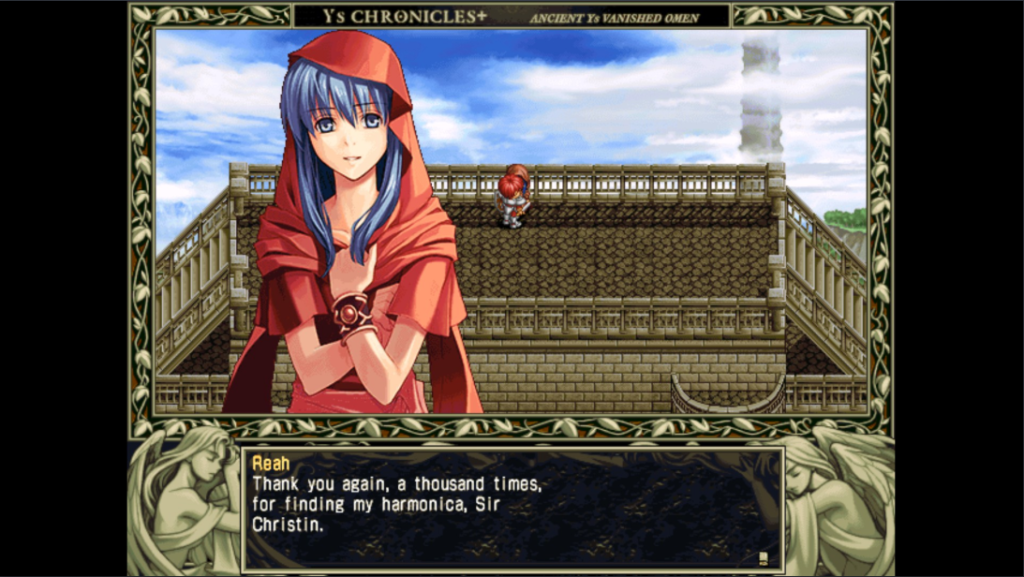
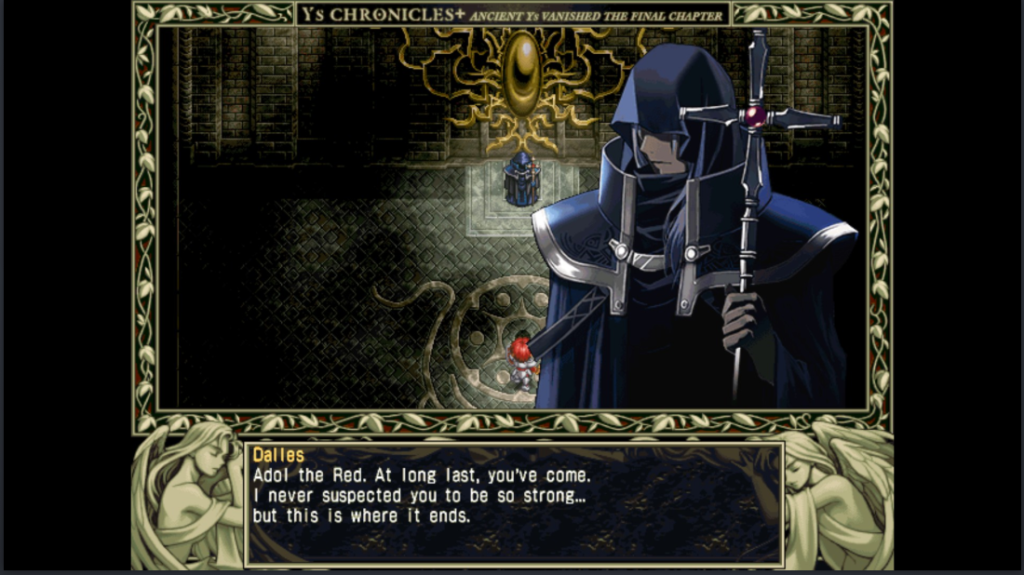
Chronicles had some visual updates on certain characters to make them consistent with Ys Origin. The various remakes made a lot of compromises in terms of mechanics and overall artistic style. I generally feel that Chronicles has the best artistic style, with modern artistic sensibilities whilst retaining a nostalgic timeless charm worthy of the original duology. The game also maintains a distinct identity in its sound design with many audio details going on to become series’ staples.
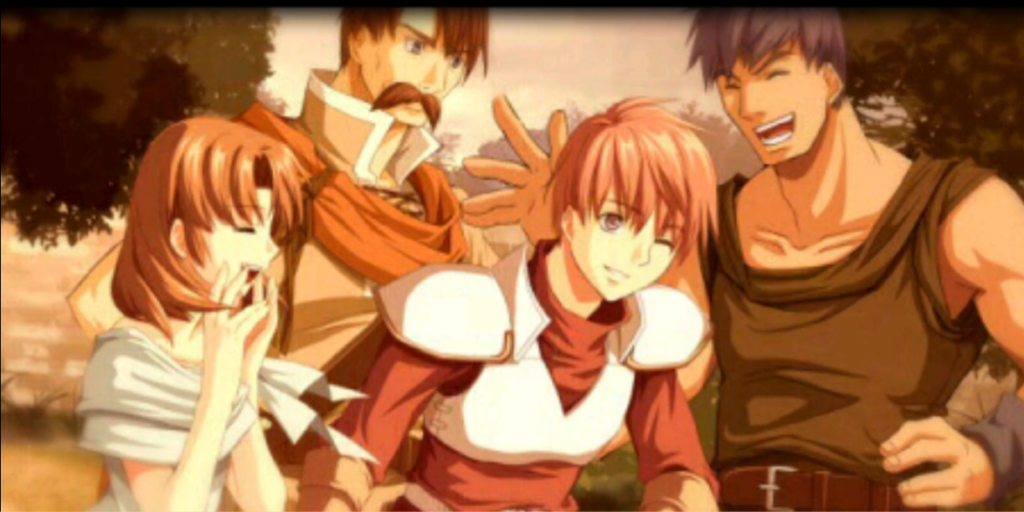
Conclusion
Just because something was influential when it was released doesn’t mean it’s worth playing in the present day. Thankfully Ys 1 & 2 doesn’t suffer from this problem and remains a benchmark for not only Falcom’s library but also something that many RPGs pay homage and respect to. A true masterpiece changes the genre for the better and is largely unaffected by the passage of time and the original duology fits that to a Cleria processed T, from its gameplay to its story and sound design. The original duology is filled with plenty of intentional design and passion, which shows what put this series on the map. I recommend Ys 1 & 2 to anyone interested in the history of RPGs as well as fans of the pioneering of action role-playing games! Special thanks to OmgFloofy for collaborating on this article!
Patron Shout-Out
Special thanks also to our supporting patrons who make our content possible:
Francesco
Lisa

